Southern Stories Read online
Page 5
QUEER AMERICAN RIVERS
BY F. H. SPEARMAN
I wonder if my readers realize what a story of the vast extent of ourcountry is told by its rivers?
Every variety of river in the world seems to have a cousin in ourcollection. What other country on the face of the globe affords such anassortment of streams for fishing and boating and swimming andskating--besides having any number of streams on which you can do noneof these things? One can hardly imagine rivers like that; but we havethem, plenty of them, as you shall see.
As for fishing, the American boy may cast his flies for salmon in theArctic circle, or angle for sharks under a tropical sun in Florida,without leaving the domain of the American flag. But the fishing-riversare not the most curious, nor the most instructive as to diversity ofclimate, soil, and that sort of thing--physical geography, the teachercalls it.
A LIVE-OAK WITH SPANISH MOSS.]
For instance, if you want to get a good idea of what tropical heat andmoisture will do for a country, slip your canoe from a Florida steamerinto the Ocklawaha River. It is as odd as its name, and appears to behopelessly undecided as to whether it had better continue in the fishand alligator and drainage business, or devote itself to raisinglive-oak and cypress-trees, with Spanish moss for mattresses as a sideproduct.
In this fickle-minded state it does a little of all these things, sothat when you are really on the river you think you are lost in thewoods; and when you actually get lost in the woods, you are quiteconfident your canoe is at last on the river. This confusion is due tothe low, flat country, and the luxuriance of a tropical vegetation.
To say that such a river overflows its banks would hardly be correct;for that would imply that it was not behaving itself; besides, it hasn't any banks--or, at least, very few! The fact is, those peacefulFlorida rivers seem to wander pretty much where they like over thepretty peninsula without giving offense; but if Jack Frost takes such aliberty--presto! you should see how the people get after _him_ withweather-bulletins and danger-signals and formidable smudges. So theOcklawaha River and a score of its kind roam through the woods,--ormaybe it is the woods that roam through them,--and the moss sways fromthe live-oaks, and the cypress trees stick their knees up through thewater in the oddest way imaginable.
In Florida one may have another odd experience: a river ride in anox-cart. Florida rivers are usually shallow, and when the water is highyou can travel for miles across country behind oxen, with more or lessriver under you all the way. There are ancient jokes about Floridasteamboats that travel on heavy dews, and use spades for paddle-wheels.
But those of you who have been on its rivers know there is but oneFlorida, with its bearded oaks and fronded palms; its dusky woods,carpeted with glassy waters; its cypress bays, where lonely cranes pose,silently thoughtful (of stray polliwogs); and its birds of wondrousplumage that rise with startled splash when the noiseless canoe glidesdown upon their haunts.
MOSS-DRAPED LIVE-OAKS.]
Every strange fowl and every hideous reptile, every singular plant andevery tangled jungle, will tell the American boy how far he is to thesouth. Florida is, in fact, his corner of the tropics; and the clearwaters of its rivers, stained to brown and wine-color with the juicesof a tropical vegetation, will tell him, if he reads nature's book, howdifferent the sandy soil of the South is from the yellow mold of thegreat Western plains.
Such a boy hardly need ask the conductor how far west he is if he cancatch a glimpse of one of the rivers. All the rivers of the plains arealike full of yellow mud, because the soil of the plains melts at thetouch of water. These are our spendthrift rivers, full to the banks attimes, but most of the year desperately in need of water. It is onlywith the greatest effort that they can keep their places in the summer:there is just a scanty thread of water strung along a great, ramblingbed of sand, to restrain Dame Nature from revoking their licenses to runand turning them into cattle-ranches.
No wonder that fish refuse to have anything to do with such streams, andrefuse tempting offers of free worms, free transportation, andprotection from the fatal nets. Fancy trying to raise a family of littlefish, and not knowing one day where water is coming from the next!
Not but what there is water enough at times; only, those rivers of thegreat plains, like the Platte and the Kansas and the Arkansas, are sowasteful of their supply in the spring that by July they are gasping fora shower. So, part of the year they revel in luxury, and during the restthey go shabby--like shiftless people.
But the irrigation engineers have lately discovered something wonderfulabout even these despised rivers. During the very driest seasons, whenthe stream is apparently quite dry, there is still a great body of waterrunning in the sand. Like a vast sponge, the sand holds the water, yetit flows continually, just as if it were in plain sight, but more slowlyof course. The volume may be estimated by the depth and breadth of thesand. One pint of it will hold three quarters of a pint of water. Thisis called the underground flow, and is peculiar to this class of rivers.By means of ditches this water may be brought to the surface forirrigation.
Scattered among the foot-hills of the Rockies are rivers still morewilful in their habits. Instead of keeping to their duties in amethodical way, they rush their annual work through in a month or two;then they take long vacations. For months together they carry no waterat all; and one may plant and build and live and sleep in their desertedbeds--but beware! Without warning, they resume active business. Maybeon a Sunday, or in the middle of the night, a storm-cloud visits themountains. There is a roar, a tearing, a crashing, and down comes aterrible wall of water, sweeping away houses and barns and people. Nofishing, no boating, no swimming, no skating on those treacherousrivers; only surprise and shock and disaster!
So different that they seem to belong in a different world are the greatinter-mountain streams, like the Yellowstone and the Colorado.
They flow through landscapes of desolate grandeur, vast expansescompassed by endless mountain-ranges that chill the bright skies withnever-melting snows. The countless peaks look down on the clouds, whilefar below the clouds wind valleys that the sunlight never reaches.Twisting in gloomy dusk through these valleys, a gaping canon yawns.Peering fearfully into its black, forbidding depths, an echo reaches theear. It is the fury of a mighty river, so far below that only a sullenroar rises to the light of day. With frightful velocity it rushesthrough a channel cut during centuries of patience deep into thestubborn rock. Now mad with whirlpools, now silently awful withstretches of green water, that wait to lure the boatman to death, themighty river rushes darkly through the Grand Colorado Canon.
No sport, no fun, no frolic there. Here are only awe-inspiring gloom andgrandeur, and dangers so hideous that only a handful of men have everbraved them--fewer still survived.
Grandest of American rivers though it is, you will be glad to get awayfrom it to a noble stream like the Columbia, to a headstrong flood likethe Missouri, or an inland sea like the Mississippi; on them at leastyou can draw a full breath and speak aloud without a feeling that thesilent mountains may fall on you or the raging river swallow you up.
In the vast territory lying between the Missouri River and the PacificOcean the rivers are fast being harnessed for a work that will one daymake the most barren spots fertile. Irrigation is claiming every yearmore of the flow of Western rivers. Even the tricksy old Missouri iscontributing somewhat to irrigation, but in the queerest possible way.
With all its other eccentricities, the Missouri River leaks badly; foryou know there are leaky rivers as well as leaky boats. The governmentengineers once measured the flow of the Missouri away up in Montana, andagain some hundred miles further down stream. To their surprise, theyfound that the Missouri, instead of growing bigger down stream, as everyrational river should, was actually 20,000 second-feet[1] smaller at thelower point.
[Footnote 1: The volume of rivers is measured by the number of cubicfeet of water flowing past a given point every second. The breadth ofthe river is multiplied by
its average depth, and the ascertained speedof the current gives the number of cubic feet of water flowing by thepoint of measurement each second. This will explain the termsecond-feet.]
Now, while 20,000 second-feet could be spared from such a tremendousriver, that amount of water makes a considerable stream of itself. Manyvery celebrated rivers never had so much water in their lives. Hencethere was great amazement when the discrepancy was discovered. But oflate years Dakota farmers away to the south and east of those points onthe Missouri, sinking artesian wells, found immense volumes of waterwhere the geologists said there would n't be any. So it is believed thatthe farmers have tapped the water leaking from that big hole in theMissouri River away up in Montana; and from these wells they irrigatelarge tracts of land, and, naturally, they don't want the river-bedmended. Fancy what a blessing it is, when the weather is dry, to have ariver boiling out of your well, ready to flow where you want it over thewheat-fields! For of all manner of work that a river can be put to,irrigation is, I think, the most useful. But isn't that a queer way forthe Missouri to wander about underneath the ground?

 Astounding Stories, March, 1931
Astounding Stories, March, 1931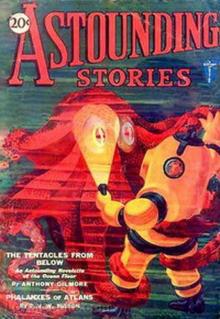 Astounding Stories, February, 1931
Astounding Stories, February, 1931 Futuria Fantasia, Spring 1940
Futuria Fantasia, Spring 1940 The King's Daughter and Other Stories for Girls
The King's Daughter and Other Stories for Girls Uncanny Tales
Uncanny Tales Masters of Noir: Volume Two
Masters of Noir: Volume Two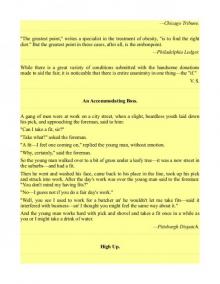 Witty Pieces by Witty People
Witty Pieces by Witty People Sylvaneth
Sylvaneth Space Wolves
Space Wolves Hammerhal & Other Stories
Hammerhal & Other Stories The Fantasy Fan, March, 1934
The Fantasy Fan, March, 1934 Astounding Stories of Super-Science, August 1930
Astounding Stories of Super-Science, August 1930 Astounding Stories, August, 1931
Astounding Stories, August, 1931 The Burden of Loyalty
The Burden of Loyalty Return to Wonderland
Return to Wonderland Anthology - A Thousand Doors
Anthology - A Thousand Doors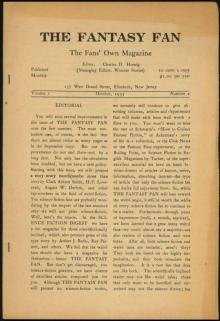 The Fantasy Fan, October 1933
The Fantasy Fan, October 1933 Astounding Stories, June, 1931
Astounding Stories, June, 1931 Southern Stories
Southern Stories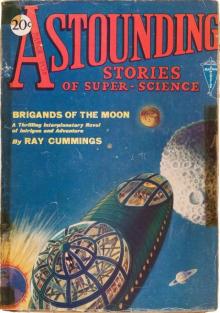 Astounding Stories of Super-Science, May, 1930
Astounding Stories of Super-Science, May, 1930 The Fantasy Fan December 1933
The Fantasy Fan December 1933 Adventures in Many Lands
Adventures in Many Lands The Fantasy Fan February 1934
The Fantasy Fan February 1934 The Fantasy Fan November 1933
The Fantasy Fan November 1933 Astounding Stories, April, 1931
Astounding Stories, April, 1931 Fame and Fortune Weekly, No. 801, February 4, 1921
Fame and Fortune Weekly, No. 801, February 4, 1921 Astounding Stories of Super-Science, November, 1930
Astounding Stories of Super-Science, November, 1930 Astounding Stories of Super-Science January 1931
Astounding Stories of Super-Science January 1931 A Monk of Fife
A Monk of Fife Astounding Stories of Super-Science September 1930
Astounding Stories of Super-Science September 1930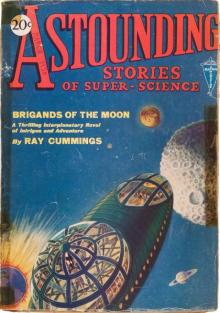 Astounding Stories of Super-Science July 1930
Astounding Stories of Super-Science July 1930 Astounding Stories of Super-Science, June, 1930
Astounding Stories of Super-Science, June, 1930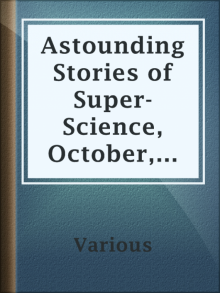 Astounding Stories of Super-Science, October, 1930
Astounding Stories of Super-Science, October, 1930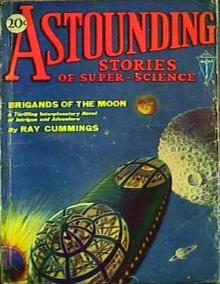 Astounding Stories of Super-Science, March 1930
Astounding Stories of Super-Science, March 1930 The Fantasy Fan January 1934
The Fantasy Fan January 1934 The Fantasy Fan September 1933
The Fantasy Fan September 1933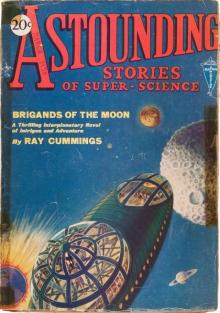 Astounding Stories of Super-Science February 1930
Astounding Stories of Super-Science February 1930 Astounding Stories, May, 1931
Astounding Stories, May, 1931 Strange Stories of Colonial Days
Strange Stories of Colonial Days Golden Age of Science Fiction Vol IX
Golden Age of Science Fiction Vol IX Astounding Stories of Super-Science, December 1930
Astounding Stories of Super-Science, December 1930 Evolutions: Essential Tales of the Halo Universe
Evolutions: Essential Tales of the Halo Universe Good Stories Reprinted from the Ladies' Home Journal of Philadelphia
Good Stories Reprinted from the Ladies' Home Journal of Philadelphia Dragons!
Dragons! Murder Takes a Holiday
Murder Takes a Holiday Legacies of Betrayal
Legacies of Betrayal STAR WARS: TALES FROM THE CLONE WARS
STAR WARS: TALES FROM THE CLONE WARS Strange New Worlds 2016
Strange New Worlds 2016 Lippincott's Magazine, August, 1885
Lippincott's Magazine, August, 1885 Golden Age of Science Fiction Vol X
Golden Age of Science Fiction Vol X Hot Stuff
Hot Stuff Santa Wore Spurs
Santa Wore Spurs Paranormal Erotica
Paranormal Erotica Tangled Hearts: A Menage Collection
Tangled Hearts: A Menage Collection Sweet Tea and Jesus Shoes
Sweet Tea and Jesus Shoes The Journey Prize Stories 25
The Journey Prize Stories 25 Wild Western Tales 2: 101 Classic Western Stories Vol. 2 (Civitas Library Classics)
Wild Western Tales 2: 101 Classic Western Stories Vol. 2 (Civitas Library Classics) (5/15) The Golden Age of Science Fiction Volume V: An Anthology of 50 Short Stories
(5/15) The Golden Age of Science Fiction Volume V: An Anthology of 50 Short Stories (4/15) The Golden Age of Science Fiction Volume IV: An Anthology of 50 Short Stories
(4/15) The Golden Age of Science Fiction Volume IV: An Anthology of 50 Short Stories Ten Journeys
Ten Journeys The Boss
The Boss The Penguin Book of French Poetry
The Penguin Book of French Poetry Golden Age of Science Fiction Vol VIII
Golden Age of Science Fiction Vol VIII His Cinderella Housekeeper 3-in-1
His Cinderella Housekeeper 3-in-1 The Magazine of Fantasy & Science Fiction - July/August 2016
The Magazine of Fantasy & Science Fiction - July/August 2016 PYRATE CTHULHU - Tales of the Cthulhu Mythos (vol.2)
PYRATE CTHULHU - Tales of the Cthulhu Mythos (vol.2) Tales from a Master's Notebook
Tales from a Master's Notebook April 1930
April 1930 New Erotica 6
New Erotica 6 Damocles
Damocles The Longest Night Vol. 1
The Longest Night Vol. 1 The Golden Age of Science Fiction Volume VI: An Anthology of 50 Short Stories
The Golden Age of Science Fiction Volume VI: An Anthology of 50 Short Stories (1/15) The Golden Age of Science Fiction: An Anthology of 50 Short Stories
(1/15) The Golden Age of Science Fiction: An Anthology of 50 Short Stories Eye of Terra
Eye of Terra ONCE UPON A REGENCY CHRISTMAS
ONCE UPON A REGENCY CHRISTMAS Nexus Confessions
Nexus Confessions Passionate Kisses
Passionate Kisses War Without End
War Without End Doctor Who: Time Lord Fairy Tales
Doctor Who: Time Lord Fairy Tales Gotrek and Felix: The Anthology
Gotrek and Felix: The Anthology WESTERN CHRISTMAS PROPOSALS
WESTERN CHRISTMAS PROPOSALS The Journey Prize Stories 27
The Journey Prize Stories 27 The Silent War
The Silent War Liaisons
Liaisons Ellora's Cavemen: Tales from the Temple IV
Ellora's Cavemen: Tales from the Temple IV Ellora's Cavemen: Tales from the Temple II
Ellora's Cavemen: Tales from the Temple II Some of the Best From Tor.com, 2013 Edition: A Tor.Com Original
Some of the Best From Tor.com, 2013 Edition: A Tor.Com Original Urban Occult
Urban Occult Fractures
Fractures The Stories: Five Years of Original Fiction on Tor.com
The Stories: Five Years of Original Fiction on Tor.com The Penguin Book of Modern British Short Stories
The Penguin Book of Modern British Short Stories Mortarch of Night
Mortarch of Night The Portable Nineteenth-Century African American Women Writers
The Portable Nineteenth-Century African American Women Writers The Golden Age of Science Fiction Volume VII: An Anthology of 50 Short Stories
The Golden Age of Science Fiction Volume VII: An Anthology of 50 Short Stories Holy Bible: King James Version, The
Holy Bible: King James Version, The Eight Rooms
Eight Rooms sanguineangels
sanguineangels DarkNightsWithaBillionaireBundle
DarkNightsWithaBillionaireBundle Casserole Diplomacy and Other Stories
Casserole Diplomacy and Other Stories How I Survived My Summer Vacation
How I Survived My Summer Vacation Alfred Hitchcock Presents: 16 Skeletons From My Closet
Alfred Hitchcock Presents: 16 Skeletons From My Closet Lords, Ladies, Butlers and Maids
Lords, Ladies, Butlers and Maids The B4 Leg
The B4 Leg Ellora's Cavemen: Tales from the Temple I
Ellora's Cavemen: Tales from the Temple I 2014 Campbellian Anthology
2014 Campbellian Anthology There Is Only War
There Is Only War Obsidian Alliances
Obsidian Alliances 12 Gifts for Christmas
12 Gifts for Christmas Scary Holiday Tales to Make You Scream
Scary Holiday Tales to Make You Scream 25 For 25
25 For 25 The Plagues of Orath
The Plagues of Orath And Then He Kissed Me
And Then He Kissed Me Star Trek - Gateways 7 - WHAT LAY BEYOND
Star Trek - Gateways 7 - WHAT LAY BEYOND Laugh Your Head Off Again and Again
Laugh Your Head Off Again and Again The Balfour Legacy
The Balfour Legacy Golden Age of Science Fiction Vol XI
Golden Age of Science Fiction Vol XI (3/15) The Golden Age of Science Fiction Volume III: An Anthology of 50 Short Stories
(3/15) The Golden Age of Science Fiction Volume III: An Anthology of 50 Short Stories Shas'o
Shas'o Astounding Science Fiction Stories: An Anthology of 350 Scifi Stories Volume 2 (Halcyon Classics)
Astounding Science Fiction Stories: An Anthology of 350 Scifi Stories Volume 2 (Halcyon Classics) Twists in Time
Twists in Time Meduson
Meduson The Magazine of Fantasy & Science Fiction - August 1980
The Magazine of Fantasy & Science Fiction - August 1980 The Journey Prize Stories 22
The Journey Prize Stories 22 The Book that Made Me
The Book that Made Me Angels of Death Anthology
Angels of Death Anthology Ask the Bones
Ask the Bones Emergence
Emergence Beware the Little White Rabbit
Beware the Little White Rabbit Xcite Delights Book 1
Xcite Delights Book 1 Where flap the tatters of the King
Where flap the tatters of the King The Journey Prize Stories 21
The Journey Prize Stories 21 Tales of the Slayer, Volume II
Tales of the Slayer, Volume II Glass Empires
Glass Empires Golden Age of Science Fiction Vol XII
Golden Age of Science Fiction Vol XII (2/15) The Golden Age of Science Fiction Volume II: An Anthology of 50 Short Stories
(2/15) The Golden Age of Science Fiction Volume II: An Anthology of 50 Short Stories Fairytale Collection
Fairytale Collection Angels!
Angels! Golden Age of Science Fiction Vol XIII
Golden Age of Science Fiction Vol XIII